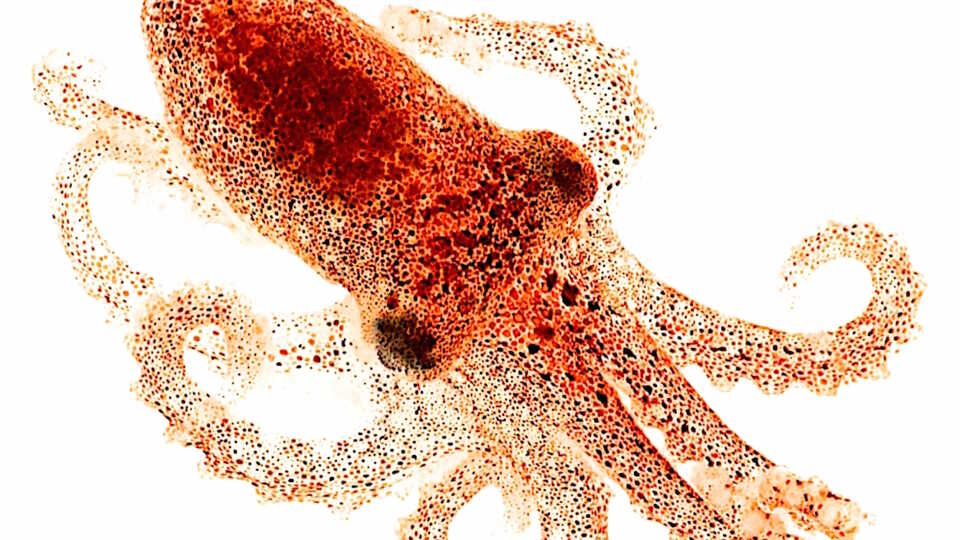Science News
A Cephalopod Light Show

When cephalopods are angry or amorous or want to hide, they change colors by controlling the chromatophores in their skin, using their muscles to expand or contract patches of color .
Scientists understand that most of these color changes are responses to visual cues—something an octopus, squid, or cuttlefish sees with its eyes. But recent research indicates that these amazing mollusks can sense light through their skin. Researchers Desmond Ramirez and Todd Oakley of UC Santa Barbara wondered if this could also trigger color change.
The team looked to the California two-spot octopus (Octopus bimaculoides), and shed white light on the octopus’s skin. Surprisingly, Ramirez found that this caused the chromatophores to expand and change color. When the light was turned off, the chromatophores relaxed, and the skin returned to its original hue. This process, Ramirez notes, suggests that light sensors are connected to the chromatophores, enabling a response without input from the brain or eyes. He and Oakley dub the process Light-Activated Chromatophore Expansion (LACE).
Ramirez used molecular experiments to determine which proteins were expressed in the skin and found rhodopsin—usually produced in the eye—in the sensory neurons on the skin tissue’s surface.
According to Oakley, this new research suggests an evolutionary adaptation. “We’ve discovered new components of this really complex behavior of octopus camouflage… It looks like the existing cellular mechanism for light detection in octopus eyes, which has been around for quite some time, has been co-opted for light sensing in the animal's skin and used for LACE,” he explains. “So instead of completely inventing new things, LACE puts parts together in new ways and combinations.” Same tool, new use!
The research is published in the current edition of the Journal of Experimental Biology.
(Color-changing cephalopods—including live octopus and cuttlefish!—are part of the Academy’s upcoming exhibit, Color of Life, opening June 12. Science Today will also feature a video about these marvelous mollusks next week.)
Image: UC Santa Barbara